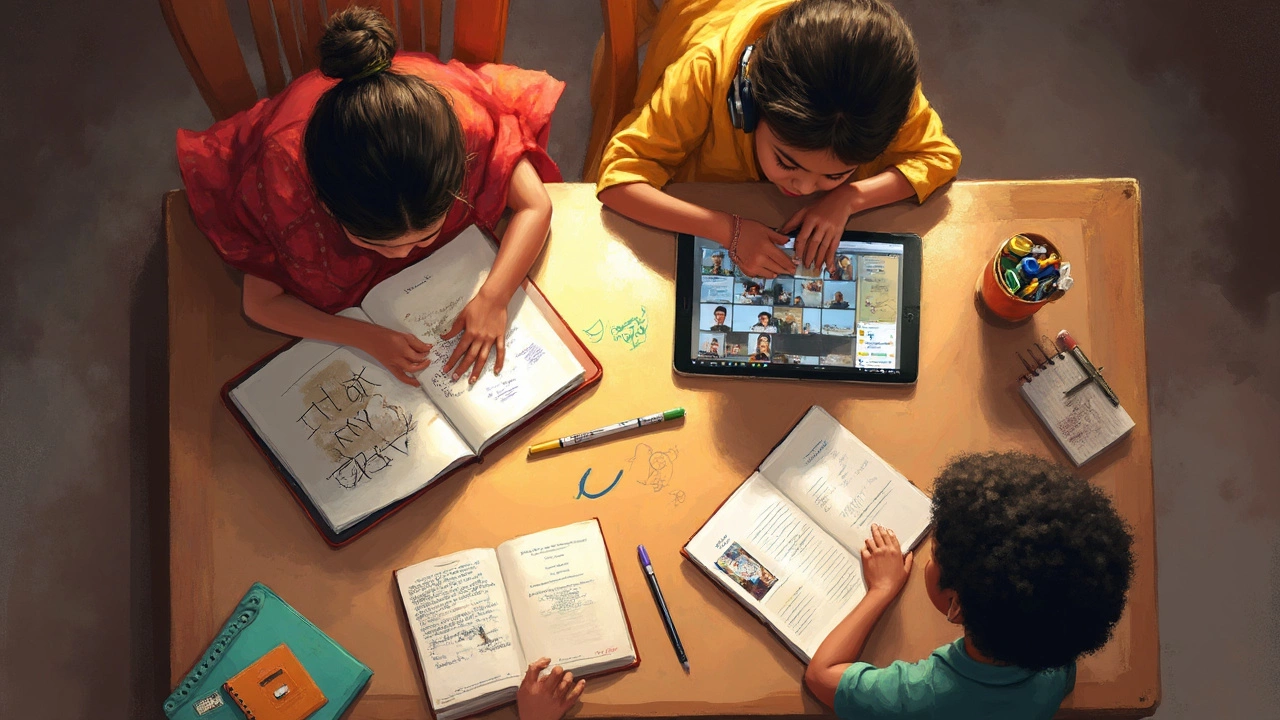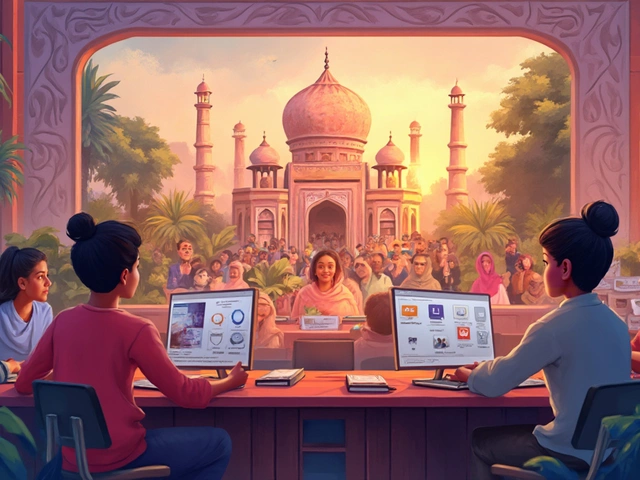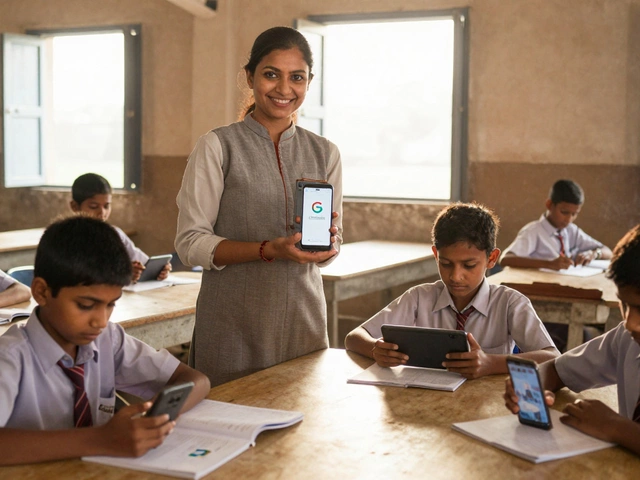If you think distance education is just about Zoom lectures in pajama pants, you’re missing the real story. Sure, it’s flexible—you can actually finish assignments on your couch or in a coffee shop. But the big thing that sets distance education apart is how it flips the learning experience: you choose when, where, and often how you learn.
Instead of walking into a classroom, everything happens online. This could mean live sessions, recorded videos, discussion forums, or even game-style modules. The freedom is huge, but so is the need to stay organized and motivated. Did you know over 35% of college students have taken at least one fully online course as of 2024? That’s not just a trend—it’s a whole shift in how people get degrees, build skills, or even switch careers.
What really matters is the way distance education brings people together. You’ll have classmates from different countries, cultures, and backgrounds. Instead of stiff classroom rules, you’re often encouraged to talk, message, and work with people you wouldn’t meet on a physical campus.
- What Defines Distance Education Today
- How Technology Shapes Remote Learning
- The Role of Student Independence
- Interaction and Connection in Digital Classrooms
- Tips for Thriving in Distance Education
What Defines Distance Education Today
Distance education has totally changed shape over the last couple of decades. What started as sending lessons through the mail is now mostly about high-speed internet, cloud storage, and instant feedback. Distance education today means students and teachers are in different locations, and pretty much everything happens online. This includes classes, assignments, tests, and group projects.
The really important thing: students don’t have to show up anywhere in person. Everything—from lectures to quizzes—is available remotely. That removes travel, housing, and scheduling headaches. Instead of a one-size-fits-all classroom, distance education lets people learn at their own pace and fit it around jobs or family. This is huge if you’re working, parenting, or living far away from big universities.
You’ll find distance learning in almost every stage of education. Elementary school kids might do video check-ins with teachers. College students enroll in fully online degree programs. There are even corporate training and professional certifications being handled 100% online now.
Here’s something eye-opening. Around 80% of universities in the U.S. offered some form of online learning by late 2024. Adult learners, especially, are signing up at record rates. Here’s a quick look at what’s included under the umbrella of distance ed:
- Live video classes (think Zoom, Teams, or Google Meet)
- Self-paced recorded lessons and tutorials
- Online forums or chat rooms for discussion
- Remote group projects using shared documents or apps
- Assignments and quizzes submitted via learning platforms like Canvas or Moodle
One more thing to keep in mind: good distance education programs give access to things you’d normally get on campus, like libraries, tutoring, and technical support—but online. The best programs are interactive, not just a stack of videos you watch by yourself.
How Technology Shapes Remote Learning
Technology is really the engine behind distance education. Without the tools and apps we use now, remote learning wouldn’t even be possible. In 2024, most courses use a mix of platforms—think Zoom, Google Classroom, Microsoft Teams, and learning management systems like Canvas or Moodle. These aren’t just places to upload assignments. They help you connect in real-time, join group chats, take quizzes, and even work on digital whiteboards together.
One cool thing—courses can be way more interactive than in a regular classroom. Many colleges use video quizzes that pause to check if you're following along. Others throw in online discussion boards, where you share ideas when it fits your schedule. Want feedback? Professors can leave comments on videos or grade assignments with audio notes. It takes away some of the impersonality people worry about.
You can also track your progress easily. Most platforms show your grades instantly, let you know what deadlines are coming up, and often send reminders straight to your phone or email. That kind of transparency wasn’t possible before these digital systems became standard.
The numbers are impressive, too. Check this out:
| Tool | Users (2024) |
|---|---|
| Zoom | Over 300 million daily meeting participants |
| Google Classroom | 150 million users |
| Moodle | More than 300 million enrollments globally |
This technology isn’t just about slick platforms. Closed captioning makes content more accessible. Mobile apps mean you can learn during a commute or while traveling. Automated reminders and digital calendars help students stay on top of things without sticky notes everywhere. And if you have tech issues, most programs have built-in support chats to help, so you’re not stuck on your own.
Plus, tech opens up specialized experiences that just aren’t possible in a regular classroom—think virtual science labs or AI tools that help with essay feedback. In short, the right mix of technology does more than deliver content; it shapes how online learning fits into real life, making it less about just logging in and more about really engaging with the material.

The Role of Student Independence
In distance education, it’s not just about logging into a class and watching a lesson. Success actually depends on how well you stay on top of things by yourself. There’s no one reminding you every day to finish that quiz or work on the group project. You pick when you study, but you also have to hold yourself accountable. Self-motivation isn’t a nice bonus—it’s the baseline.
Let’s break it down. You’re expected to set your own schedule, figure out deadlines, and even find ways to understand tricky subjects without a teacher in your face. That’s a big shift from traditional school, where routines are made for you and reminders are constant. It doesn’t mean you’re all alone, but it does mean you’ll need at least a bit of self-discipline to keep up.
Check out these habits that most successful online learning students swear by:
- Create a dedicated study spot—yes, even if it’s the corner of your couch.
- Use planners or apps to track assignments and exams.
- Break tasks into bite-sized pieces so you don’t fall behind.
- Connect with classmates—accountability partners can be a lifesaver.
- Take regular breaks to avoid burning out.
Here’s something that surprises a lot of people: data from the National Center for Education Statistics in 2023 showed that 42% of students who struggled in remote study did so mainly because they couldn’t manage their time. It’s way more common than tech issues or lack of resources.
If you’re new to e-learning, don’t panic. Independence gets easier with practice. Start with small steps, be honest about what trips you up, and tweak your routines until you find something that sticks. The good news? Mastering these skills pays off not just in classes, but in real jobs and life in general.
Interaction and Connection in Digital Classrooms
One of the biggest worries about distance education is that it can get lonely, but the reality is often the opposite. Tech tools have made it easier than ever to create real connections, even if everyone is logging in from different corners of the world. Today, students aren’t just silent icons on a screen—they’re active members of group projects, class chats, or even virtual study parties.
Everyday tools like video calls, group messaging apps, and discussion boards are basically the new campus coffee shop. If a class uses breakout rooms or regular online debates, you actually chat more than you might in person. Teachers can also send quick video messages, launch polls, or set up check-ins. It’s common to see breakout sessions run for discussion or for teamwork, so you don’t just hear a professor talk for an hour straight.
Check out these ways people stay connected in digital classrooms:
- Live Video Sessions: Face-to-face time helps you see who you’re working with. Many classes use Zoom or Teams for live discussion, which builds trust and makes it easier to ask for help.
- Asynchronous Forums: Not everyone works best at the same time of day. Forum posts let you think things through and reply when you’re ready, which is handy if your classmates are in different time zones.
- Collaborative Projects: Google Docs, shared whiteboards, and even digital Post-its let you actually build stuff together, not just share ideas. You’ll probably use these more than you did in a face-to-face class.
- Peer Review and Group Feedback: Lots of courses ask students to comment on each other’s work, which means you actually get more feedback, faster.
Let’s talk numbers. According to a 2023 survey from the Online Learning Consortium, over 60% of distance learners said they interacted with classmates weekly—or more often. That’s not just a small bump; it means students are forming real networks online.
| Tool | Percent of students using it weekly |
|---|---|
| Live video sessions | 72% |
| Discussion forums | 68% |
| Messaging apps/groups | 57% |
| Peer review tools | 43% |
And here’s one quick tip: the more you join in—whether it’s a class chat or a project group—the more likely you’ll stay motivated and finish the course. Treat your online class like a community. Show up, say hi, ask questions. Connections make the whole remote study experience feel real.

Tips for Thriving in Distance Education
The cool thing about distance education is the freedom. But freedom can backfire if you’re not careful. Folks who do well in online learning don’t just ‘go with the flow’—they create habits that make studying manageable.
- Set a schedule and stick to it. Treat your online classes like a job. Without a routine, it’s way too easy to procrastinate. Block time in your calendar for studying, watching lectures, and working on assignments.
- Make your learning zone distraction-free. Don’t try to focus next to loud roommates or a TV blaring your favorite show. Find a quiet spot, use headphones if you need them, and keep your phone on silent (or in another room).
- Engage with your classmates. Discussion boards, group chats, and virtual study sessions aren’t just busywork. Actual studies from 2023 showed that students who interacted regularly with peers online finished courses at higher rates.
- Don’t ghost your instructors. If something isn’t clear, send a message or schedule a quick video call. Instructors in online learning expect questions and want you to succeed.
- Use the tech, don’t fight it. Explore the tools your course platform offers. Calendar reminders, note-taking apps, even built-in quizzes—all these bits of e-learning tech are there to help, not annoy you.
Here’s a quick look at habits that actually make a difference, according to recent research in remote study:
| Habit | Students Who Use It (%) | Success Rate |
|---|---|---|
| Weekly Planning | 64% | 80% course completion |
| Active Discussion Participation | 58% | 78% course completion |
| Instructor Check-ins | 41% | 73% course completion |
Fact is, almost half the people who drop out of remote study programs never developed these habits. If you want your online learning journey to go smoothly—and actually get that certification or degree—build routines, stay connected, and lean into the tech your course gives you. It’s not magic. Just smart, practical steps that turn distance education from a hassle into a legit opportunity.









